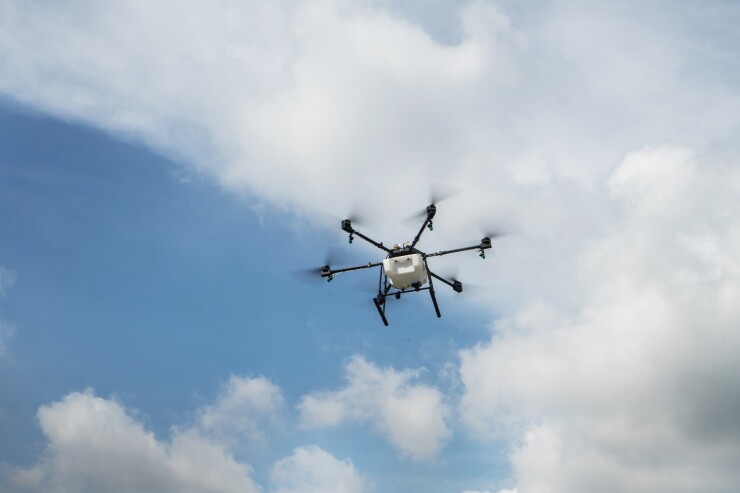Though they have different pressures and market demands, small and midsized insurers aren’t ignoring the rapid digital transformation sweeping the insurance industry.
Idaho Farm Bureau is in the midst of upgrading the company’s IT infrastructure and core systems, initiatives that are allowing the multiline P&C insurer to glean insight and improve the customer experience using next-generation digital tools like drones, smarthome devices and geographical information systems (GIS).
CIO Adam Waldron says that the company was looking to set up a hot disaster-recovery site when it contracted with Scale Computing’s HC3 for server, storage and virtualization. Now that Scale is up and running, the company is able to leverage the investment to support advanced digital efforts. Scale integrates with Google Cloud Platform to allow customers to tap into additional storage and running environments at the same time it continues to work on-premise.
“We were a VMWare shop, but to get the capabilities [and hardware] we needed, it would double our licensing costs,” he says. “What it came down to was scale, rapid expansion [of our server space] when we needed it.”
Idaho Farm Bureau is also in the midst of a full core systems migration to Guidewire’s InsuranceSuite. Both efforts promise to help reshape the company in the future, Waldron explains. The infrastructure shift allows it to ingest more data, while the new policy administration, claims and portals systems translate that into more value for customers and agents.

“We knew we needed to expand the capability of our existing stack – get the computing power we need but also bring in the added benefit to disaster recovery,” Waldron says. “We’re collecting more data, doing some things with drones and Internet of Things, so the timing was right.”
Unique opportunities
Idaho Farm Bureau’s market is smaller than most companies’, but still as diverse and demanding as any other P&C insurer. Most of the company’s customer growth is happening in urban areas, like the company’s hometown of Pocatello and Boise, the state’s largest city. At the same time, agriculture insurance is big business, but customers in every line of business are expecting a more digitally driven experience from their insurer.
“We’ve got kind of this dichotomy where we have a lot of rural areas, unique situations with large acreage, farms on wells, but we are hyperlocal – we know most of the people that we serve. Those relationships help us move faster,” Waldron says. “We have cabless tractors in Idaho, which just drive itself across the thousands of acres of fields. We found out a lot of our farmers are flying drones on their own.”
One of the ways that Idaho Farm Bureau stays in touch with its customer needs is through an internal consultant group, called LIPHT – Lead Internal Policyholder Team. This group of policyholders that also work for the company help Waldron and others keep their finger on the pulse of their end users.
“They let us use them as guinea pigs,” Waldron says. For example, LIPHT members piloted leak-prevention devices that ended up preventing five water claims, at the same time that the company built a data-science team to help make sense of the information flowing in from the hardware. That pilot taught Idaho Farm Bureau that while there’s lots of data that can be collected from sensors, some of it is more valuable than others when it comes to preventing claims.
“We found that while there’s a lot of noise, the sensors, the real thing we care about is whether or not it is functioning and if it is triggered,” Waldron explains. That helps the company respect its constituents’ privacy – by making it explicit what data is being collected – and hopefully spur further adoption.
On the drone front, Idaho Farm Bureau works with Idaho State University to test drone programs and use the technology in the field. There are two drone pilots that the company works with regularly, mostly on agriculture clients.
“We’re still a little cautious about flying drones in populated areas, mostly we do it in the rural, open areas for crop damage or risk assessment,” Waldron says. “We can fly a drone right after a crop has sprouted, and it’s good at predicting yield.”
Size matters not
Idaho Farm Bureau’s advancements are an illustration that insurers of all sizes can take part in the industry’s digital transformation. Like many bigger players, the company has a data science team focused on technologies like R and Domo’s Power BI. It’s also tapping into local colleges to find the best talent possible, and committed to innovation.
“We’re smaller, we’re more agile, we can experiment a little faster without a lot of overhead or bureaucracy,” Waldron says, while conceding that the company can be conservative at times.
“Sometimes we may think it’s better to be a fast follower. But we know there’s lots on the line,” he says. “Ultimately, it’s all about customer experience.”





